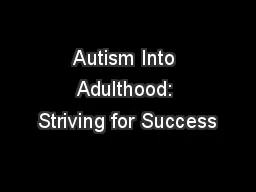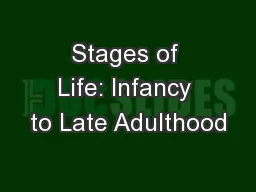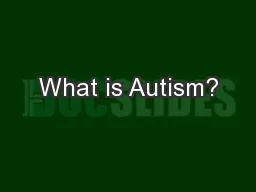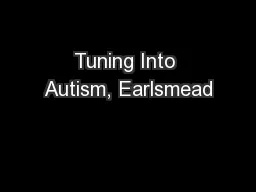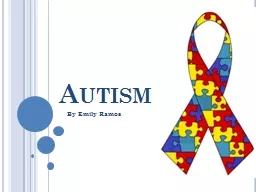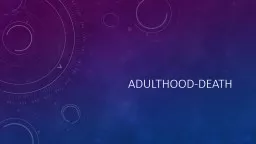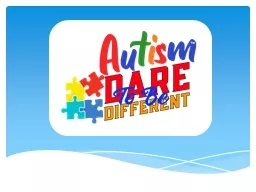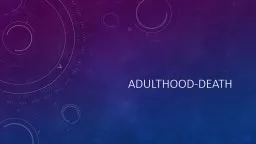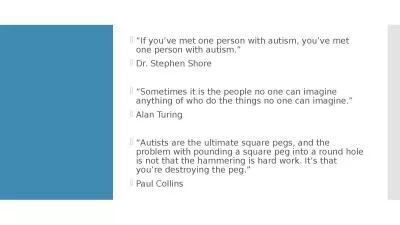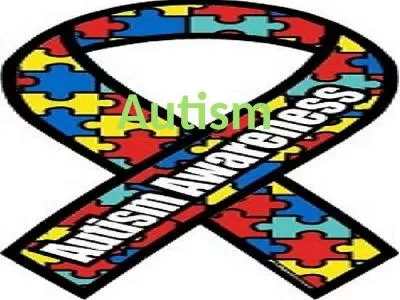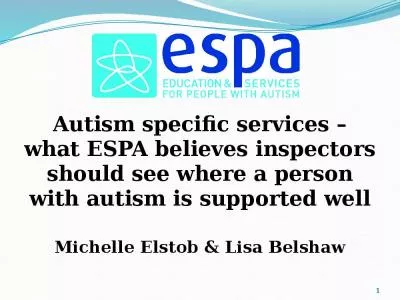PPT-Autism Into Adulthood: Striving for Success
Author : ellena-manuel | Published Date : 2020-04-02
Gary Stobbe MD Clinical Associate Professor University of Washington Depts Of Neurology amp Psychiatry April 7 2017 Jameses Guys Conflicts of Interest Dr Stobbe
Presentation Embed Code
Download Presentation
Download Presentation The PPT/PDF document " Autism Into Adulthood: Striving for Su..." is the property of its rightful owner. Permission is granted to download and print the materials on this website for personal, non-commercial use only, and to display it on your personal computer provided you do not modify the materials and that you retain all copyright notices contained in the materials. By downloading content from our website, you accept the terms of this agreement.
Autism Into Adulthood: Striving for Success: Transcript
Download Rules Of Document
" Autism Into Adulthood: Striving for Success"The content belongs to its owner. You may download and print it for personal use, without modification, and keep all copyright notices. By downloading, you agree to these terms.
Related Documents

